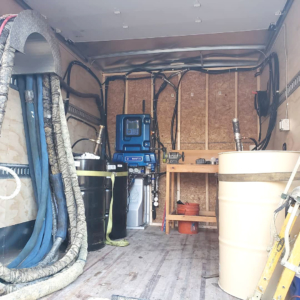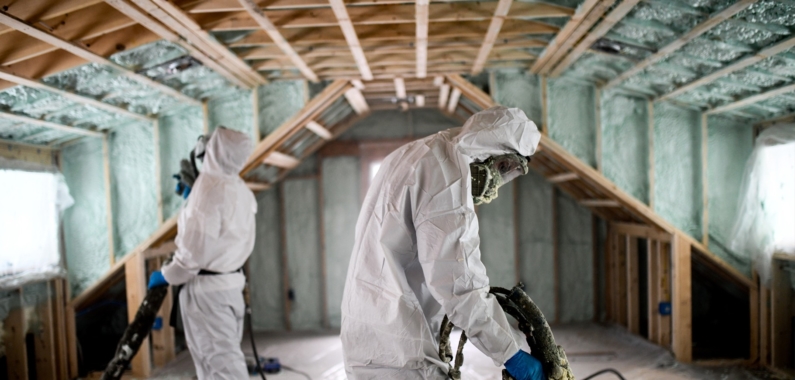Learning how to store spray foam insulation during the winter months takes expertise. “How cold can it be when applied?” and “At what temperature should it be stored?” are just two of the many questions that need to be answered before you can apply spray foam during cold weather.
Use the Correct Material
 You must use the correct material for the environment, especially in cold temperatures. According to IDI Distributors, “closed cell foams can be formulated into winter blends that are designed to withstand colder environmental and substrate temperatures. Open cell foams, however, cannot be formulated this way. Therefore, creating a suitable environment in which to apply open cell is critical for product performance.”
You must use the correct material for the environment, especially in cold temperatures. According to IDI Distributors, “closed cell foams can be formulated into winter blends that are designed to withstand colder environmental and substrate temperatures. Open cell foams, however, cannot be formulated this way. Therefore, creating a suitable environment in which to apply open cell is critical for product performance.”
Use the Correct Temperature
Before you start applying spray foam insulation in cold weather, the material needs to be properly conditioned. This means maintaining the right temperature on the storage containers (drums). IDI says drums should be stored and used between 70- and 80-degrees Fahrenheit to get the best results. The Green Cocoon is happy to say that we always heat the product and the job site (we heat the inside of the room before we spray it). The temperature must be at least 40 degrees or we won’t spray. To keep our products warm, we use drum heaters, which are like blankets for the drums. Also, the drums are always stored inside our heated warehouse. Every product is different, so we suggest you check the technical data sheet for product-specific temperature ranges.Proper Storage
 Proper storage of both the applicator and the spray foam is critical for a successful application during cold weather conditions. Both components must be at a minimum of 70°F to ensure that the supply pumps can move the material to the spray machine at an appropriate rate.
Proper storage of both the applicator and the spray foam is critical for a successful application during cold weather conditions. Both components must be at a minimum of 70°F to ensure that the supply pumps can move the material to the spray machine at an appropriate rate.
At The Green Cocoon, our material and hoses are heated. If your contractor has an older machine, it may not be able to heat the material to the required application temperature. That is why keeping the drums warm is so important.
Heaters
As mentioned above, heaters should be used to warm up the substrate prior to spraying foam. Indirect heaters are always recommended, but the most common heaters used are “torpedo heaters.” These heaters can work well when properly monitored, but it’s worth noting that they rely on fossil fuels that produce moisture. This humidity may condense on cold substrates creating moisture issues such as poor adhesion or shrinkage. Applicators should avoid the use of gas fired heaters if possible, to reduce this risk.
At The Green Cocoon, we use indirect heaters to heat the space of a spray foam job. Indirect heat does not give off CO2 into the structure. TGC has a heater on the truck and also brings in an electric heater to heat the job site.
It is also important to make sure the heaters get turned off prior to spraying foam insulation in winter. If the fumes from spraying get drawn through the heater, it can put off toxic fumes. Heat should be maintained in the building for at least 24 hours after spraying to allow the foam to complete the curing process.
To sum up, before you hire a spray foam insulation company, ask them what their process is when spraying foam insulation during the winter months. If you have any questions, please contact us. We’d love to answer them!






